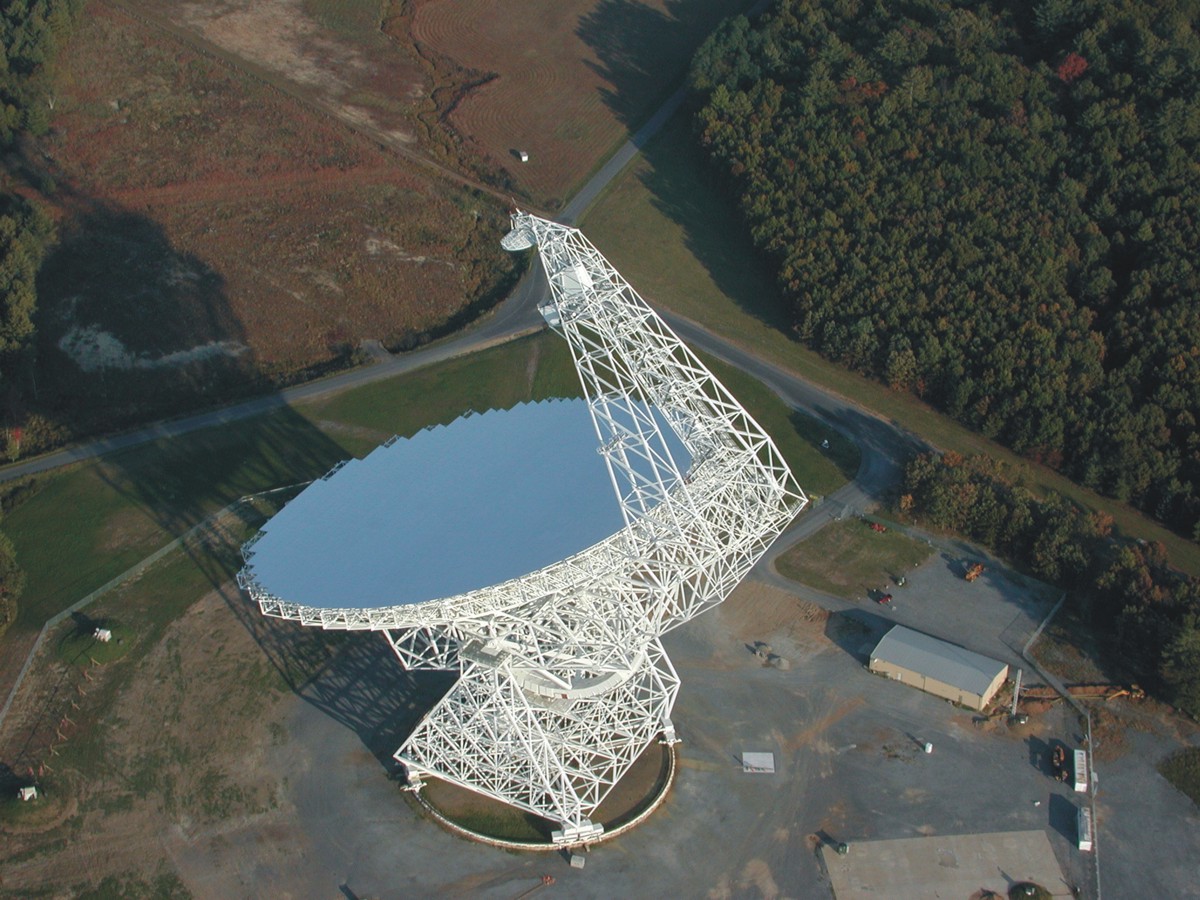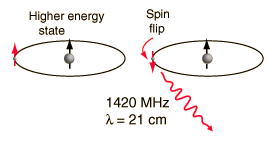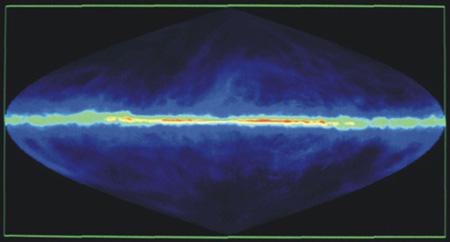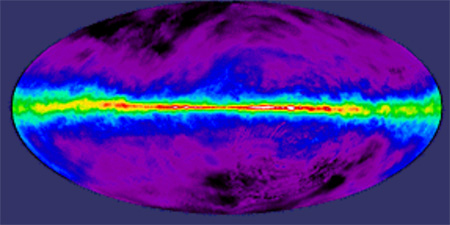Radio Astronomy
EM waves
Light consists of electromagnetic (EM) waves. The different colors of light are EM waves of different lengths. Or eyes are only sensitive to visible light, i.e. the colors of rainbow, which covers only a small portion of EM wave spectrum:
Electromagnetic spectrum Image credit: Modified from xkcd
The relation between the wavelength (λ) and frequency (f) of EM wave are governed by a simple equation:

where c is the speed of light, 299,792,458 metres per second. Astronomers study the EM waves from astronomical objects. Radio waves are EM waves of much greater wavelength than those of visible light. Astronomical bodies emit radio waves by one of several processes, including:
- thermal radiation from solid bodies such as the planets;
- thermal, or "bremsstrahlung," radiation from hot gas in the interstellar medium;
- synchrotron radiation from relativistic electrons in weak magnetic fields;
- spectral line radiation from atomic and molecular transitions that occur in the interstellar medium or in the gaseous envelopes around stars;
- pulsed radiation resulting from the rapid rotation of neutron stars surrounded by an intense magnetic field and energetic electrons, etc.
Radio Telescopes
Astronomers have developed sophisticated systems that allow them to make pictures from the radio waves emitted by astronomical objects. These systems are called Radio Telescopes. Radio telescopes are used to study naturally occurring radio emission from stars, galaxies, quasars, and other astronomical objects between wavelengths of about 10 meters and 1 millimeter. Radio telescopes vary widely, but they all have two basic components: (1) a radio antenna (dish) and (2) a sensitive radio receiver. Different from usual optical telescope, radio telescope reflects incoming radio waves by the antenna and focus the waves at the receiver.The dish is usually made up of grids of steel or metal sheets. The strength (or resolution, R) of a radio telescope is characterized by it aperture (D), i.e. the size of the antenna. It goes approximately as: R (in radian) = 1.22( λ / D). This means the greater the antenna, the higher the resolution (can resolve smaller angular separation).

The Green Bank Telescope (GBT) in West Virginia has an aperature diameter D=100m is the largest moving structure on land and weighs 700 tons. Image credit: NRAO/AUI
21 cm line
Different astronomical processes produce radio waves in different wavelengths. 21 cm (or 1420 MHz) neutral atomic hydrogen line is important in studying interstellar media and galactic structures. This 21 cm line comes from the transition between the two levels of the hydrogen 1s ground state. The two states come from the fact that both the electron and nuclear spins are 1/2 for the proton, so there are two possible states, spin parallel and spin anti-parallel. The state with the spins parallel is slightly higher in energy.
There are two possible states, spin parallel and spin antiparallel. The state with the spins parallel is slightly higher in energy. Image credit: HyperPhysics
Due to interstellar adsorption of hydrogen clouds near the galactic center, visible light is not suitable for studying these clouds. At 21 cm, radiation from hydrogen penetrates the dust clouds and gives us a more complete map of the hydrogen. However, cosmic signals are very weak (billions of times weaker than man-made signals. e.g. a mobile phone placed on the Moon would be one of the brightest objects in the radio sky seen from Earth!!). As proposed by the Scientific and Technical Sub-Committee of the United Nations Committee on the Peaceful Use of Outer Space (UN-COPUOS) in 2003, man-made radio spectrum used for telecommunications is regulated by the International Telecommunication Union (ITU). International Radio-Quiet Zones were established to protect radio astronomical bands.

The Milky Way galactic plan under visible light. Image credit: NASA

The structures of galactic plan become clear under 21 cm line observations. Image credit: NASA